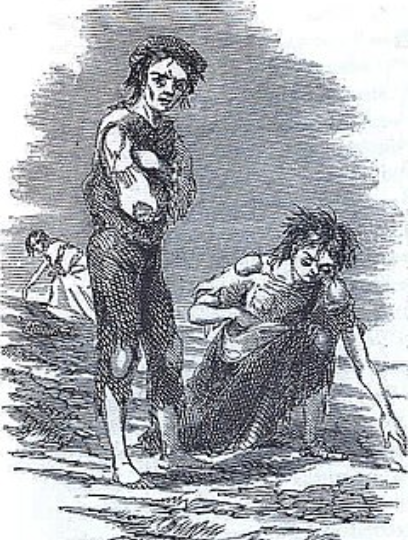A group of football fans have been videoed walking through Glasgow city centre singing “the famine is over, why don’t you go home”.
The group – believed to be Rangers fans – have been slammed after footage emerged of the “racist anti-Irish march”.
In the clip, dozens of supporters are seen walking under the bridge on Argyle Street near Glasgow Central station.
The fans, mostly dressed in all black, can be heard clapping and singing: “why don’t you go home, why don’t you go home, the famine is over, why don’t you go home.”
Humza Yousaf has said he was “disgusted” to see the footage emerge, adding that Scotland “is home” to the Irish community.
Fans were gathered at the ground for a game against rivals Celtic and they won 1-0.
They are managed by former Liverpool star Steven Gerrard currently.
The win pushes Rangers closer to the top.
But also question will be asked should the club be punished for fans behaviour?.

Fans expressed disgust at the chants and claimed the police were complicit in the march and didn’t arrest anyone for racism.
In a Tweet, the Cabinet Secretary for Health and Social Care said:
“For those hurling racist abuse at our Irish community telling them to “go home” – Scotland is their home.
“Disgusted to once again see anti-Irish racism rear its ugly head. Solidarity with our Irish community. I am sure Police Scot will hold those responsible to account.”
In a Tweet, Anwar said: “Why is @policescotland facilitating (again) a racist anti-Irish march, no kettling or arrests? If they replaced Irish with Pakistani/Muslim police would act, so why not now? Irish famine killed 1 million (Protestants too!) ended in 1852 it’s now 2021.”
It’s believed the video was taken just hours before the Rangers and Celtic match kicked off at Ibrox Stadium on Sunday afternoon.
It comes after vile sectarian graffiti was scrawled across the wall of a building near Glasgow.
Police have launched a probe after the message “all T**** are targets” was spotted on Hawthorn Street near junction for Duntocher Road in Clydebank.
Irish history
The Irish Potato Famine, also known as the Great Hunger, began in 1845 when a fungus-like organism called Phytophthora infestans (or P. infestans) spread rapidly throughout Ireland.
The infestation ruined up to one-half of the potato crop that year, and about three-quarters of the crop over the next seven years
By the late 1840s, many people across Ireland relied on potatoes as a vital part of their nutrition. This was largely because the British government had taken over many of the best grazing lands in Ireland to raise cattle. There was a large consumer demand for beef in Britain.
This meant that farmers had to turn to crops which were more likely to yield results in tougher terrain. The potato was one such crop.
It also did not help that there was a lack of genetic variability in the potatoes that were present in Ireland. The ‘Irish lumper’ represented a disproportionately high amount of potato types across the country.
The result of this crop dependency and lack of variety was that the potato crop was not only more likely to become diseased but was more likely to cause catastrophic damage should it fail.

Having crucially underestimated the potential for disaster in the years previous to 1845, the British and Irish Governments suddenly found themselves with the prospect of a humanitarian crisis on their hands.
British prime-minister Robert Peel tried to ease the effects of the famine by allowing the importation of corn and maize from the United States.
However, this was not enough for many, and as many as 3 million people signed up to soup kitchens by 1847.
Much of the relief efforts fell to Irish landlords and British absentee landowners, who soon ran out of money due to the lack of incoming funds, ensuring that they could not help out the starving population.
One particular source of resentment for the Irish people in many areas was that many of the high-quality foods they were producing, such as grain and meat, were still being exported to Britain as they could not afford to buy their own food.
The effects of the Great Irish Famine of the people of Ireland were catastrophic, with widespread starvation, disease and homelessness causing havoc among the population.
It is not known exactly how many people died during the famine, but it is thought that sadly, around 1 million people lost their lives – this was around 12-15% of Ireland’s population at the time.
To escape the effects of the famine, it is thought that as many as 2 million people emigrated Ireland to the USA and the rest of Britain, particularly in port cities like Liverpool.

